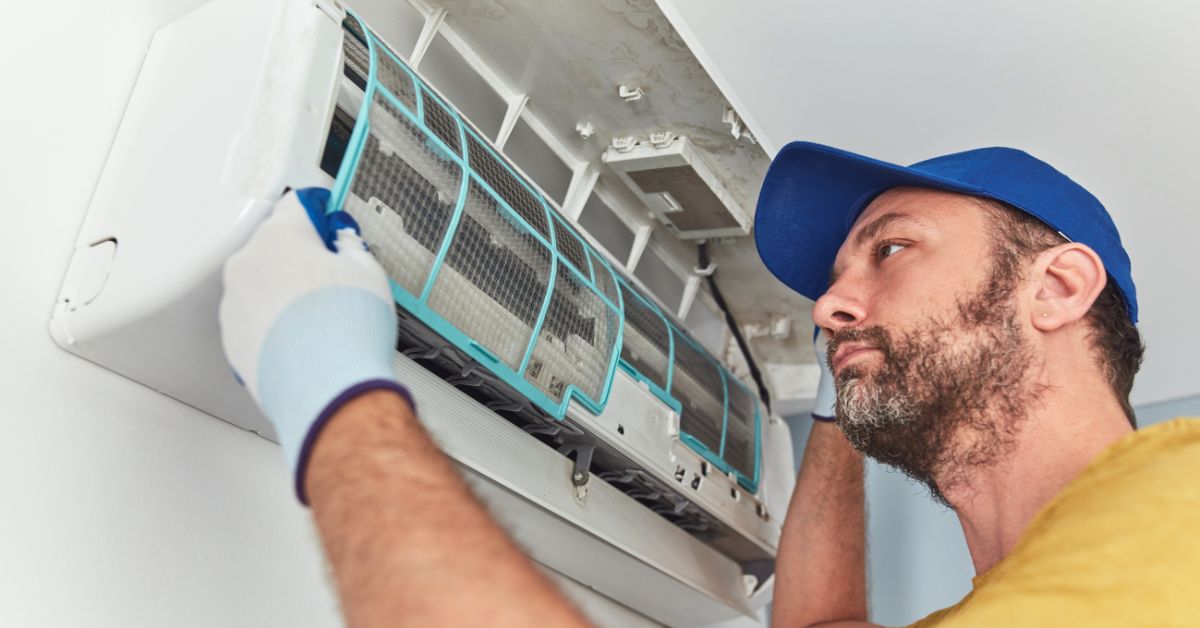The right window type inverter air conditioner is essential for residents in the Philippines due to the country’s tropical climate, which brings hot and humid conditions year-round. Inverter technology in air conditioners has become increasingly popular because of its energy efficiency and ability to maintain a consistent room temperature.
When selecting an inverter air conditioner, it is vital to consider factors such as the unit’s capacity, energy efficiency ratio (EER), and the specific cooling needs of a space to ensure both comfort and cost-effectiveness.
In the Philippines, where electricity costs can be high, an energy-efficient air conditioner is not just a luxury but a necessity. The inverter technology within these units helps to lower electricity usage by adjusting the compressor speed to the room’s temperature demands. This allows the air conditioner to use less power in maintaining the desired temperature, unlike conventional air conditioners that operate at a constant speed. As a result, choosing the right type of inverter air conditioner can lead to significant savings on electricity bills.
The window type inverter air conditioner offers the convenience of easy installation and is perfect for those living in apartments or homes where space constraints prevent the use of split type units. They are available in different capacities to accommodate a range of room sizes, making it crucial to assess the area of the space to be cooled before making a purchase. Furthermore, additional features such as timers, remote controls, and air purifying filters may contribute to heightened comfort and improved air quality in the Philippine setting.

Understanding Inverter Type Window Air Conditioners
Inverter type window air conditioners offer a modern approach to climate control. They are engineered for efficiency and operation which translates to cost savings and better temperature management for users.
Advantages of Inverter Technology
Inverter air conditioners are renowned for their energy efficiency and precise temperature control. Unlike traditional units, inverter ACs adjust the speed of the compressor motor to continuously regulate the temperature. This adjustment reduces energy consumption by up to 30-50%. Additionally, since the compressor does not turn on and off frequently, it ensures a quieter operation and extends the lifespan of the unit.
- Energy Efficiency: Reduces electricity usage.
- Constant Comfort: Maintains a stable room temperature.
- Quiet Operation: Compressor adjustments minimize noise.
- Durability: Fewer on and off cycles decrease wear and tear.
How Inverter ACs Operate
Inverter air conditioners integrate a variable frequency drive that utilizes an adjustable electrical inverter to control the speed of the motor and thus the compressor and cooling output. The sensor in the inverter unit gauges the room temperature and sends the data to the inverter which adjusts the compressor speed accordingly.
Variable Frequency Drive: Adjusts motor speed.
Sensor-Driven: Monitors and responds to room temperature changes.
Comparing Inverter and Non-Inverter ACs
When selecting a window air conditioner, one must compare inverter and non-inverter models.
Inverter ACs:
- Variable Speed Compressor: Adjusts power based on demand.
- Energy Savings: Lower electricity bills over time.
- Temperature Consistency: Avoids temperature fluctuations.
Non-Inverter ACs:
- Fixed Speed Compressor: On/off cycle at full power.
- Higher Energy Consumption: More electricity used over time.
- Temperature Variance: Can lead to noticeable temperature swings.
Inverter type window air conditioners are a technology-forward choice for effective and efficient indoor climate control in the Philippines, tailored to provide savings and comfort.
Selecting the Proper Size and Horsepower
When choosing an inverter air conditioner, the correct size and horsepower are crucial for achieving optimal efficiency and comfort.
Importance of AC Size and Horsepower
The size of an air conditioner refers to its capacity to cool a space effectively, which is measured in horsepower (HP). An appropriately sized unit ensures that a room is cooled efficiently without excessive energy consumption. Horsepower is critical; too little will not cool adequately, while too much can cause quick cycling and uneven temperature control.
- Underpowered AC: Leads to continuous running, increasing wear and energy costs.
- Overpowered AC: Results in rapid on-off cycling, which can cause humidity control issues and reduce the unit’s lifespan.
Room size is the definitive factor in deciding the horsepower needed. A standard computation in the Philippines suggests:
- Small Rooms (up to 25 sqm): 0.5 to 0.75 HP
- Medium Rooms (25-30 sqm): 0.75 to 1 HP
- Large Rooms (30+ sqm): 1 to 2 HP or more, dependent on additional factors like sun exposure, ceiling height, and room insulation.
Calculating the Right Air Conditioning Horsepower
Calculating the required horsepower involves a clear formula that considers room size and usage. Here is a basic guideline:
- Measure the Room: Calculate the room’s area (length x width) in square meters.
- Standard Usage: For typical residential usage, allocate an initial 0.5 HP for the first 9 sqm.
- Additional Space: Add 0.5 HP for every additional 9 sqm.
- Factors for Adjustment: Increase the base HP if the room is sunny, has high ceilings, contains electronic devices that generate heat, or if it frequently hosts many people.
The formula can be represented as:
Required HP = Base HP + (Room Area in sqm / 9 x 0.5 HP) + Adjustment Factors
It is fundamental to consult with a professional to assess unique aspects of the home or space that may influence the air conditioner’s required horsepower.
Installation Considerations
Proper installation is vital for the performance and safety of a window type inverter air conditioner. One must ensure window dimensions accommodate the unit, and installation practices adhere to manufacturer guidelines and local building codes.
Assessing Your Window Size
Before purchasing a window type inverter air conditioner, it is essential to measure the window’s dimensions accurately. Follow this step-by-step guide:
Measure the window width:
- Measure between the side jambs at three points: top, middle, and bottom.
- Use the smallest measurement to determine the compatible air conditioner width.
Measure the window height:
- Measure from the top jamb to the windowsill at the left, center, and right side.
- Take the smallest measurement for the appropriate air conditioner height.
Compatibility Tip: Ensure that the air conditioner’s dimensions are slightly smaller than the smallest width and height measurements of the window to guarantee a proper fit.
Installation Best Practices
When installing a window type inverter air conditioner, follow these best practices:
Support Brackets: Use support brackets if recommended by the air conditioner manufacturer. They help to secure the unit and distribute weight evenly, preventing damage to the window frame.
Weatherproofing: Apply weather-stripping around the air conditioner to seal any gaps, ensuring efficient cooling and prevention of water ingress.
Electrical Requirements: Confirm the electrical outlet is within reach and that it meets the voltage requirements of the air conditioner to avoid overloading the circuit.
By adhering to these installation guidelines, one can ensure optimal performance, efficiency, and longevity of their window-type inverter air conditioner.


